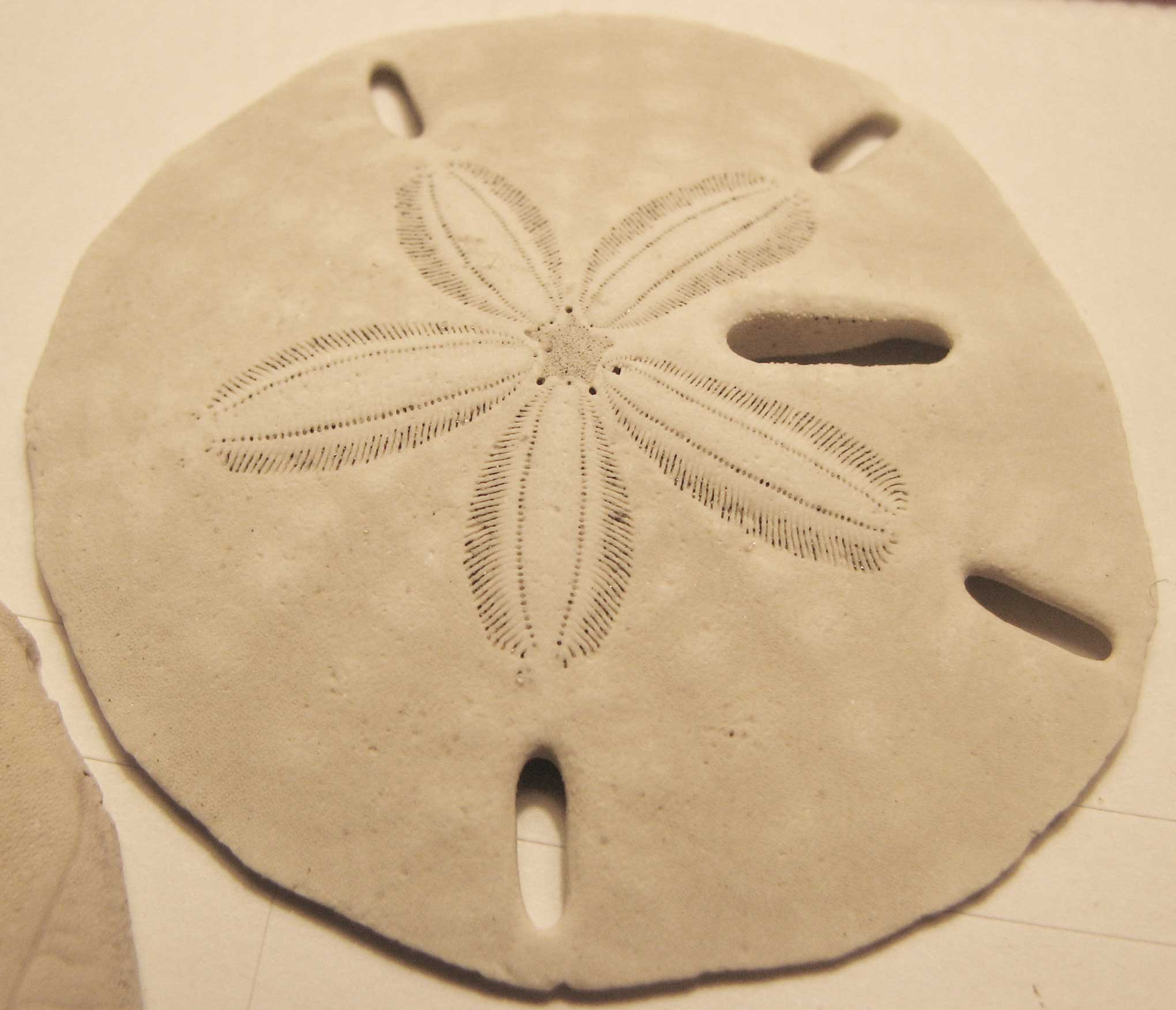- Keyhole sand dollar
Taxobox
name = Keyhole sand dollar

image_caption = "Mellita quinquiesperforata"
regnum =Animal ia
phylum =Echinodermata
classis =Echinoidea
ordo =Clypeasteroida
subordo =Scutellina
familia = Mellitidae
familia_authority = Leske, 1778
subdivision_ranks = Genera
subdivision =
genus = "Mellita"Keyhole sand dollar refers to three species of sand dollar in the genus "
Mellita " that are dispersed along the east coast of theUnited States fromVirginia toBrazil and also found along the coasts ofBermuda ,Jamaica , andPuerto Rico . "Mellita isometra" is found along the east coast of the United States, "Mellita tenuis" is found along the gulf side ofFlorida ,Alabama , andMississippi . "Mellita quinquiesperforata" is found from near theMississippi Delta toBrazil .Keyhole sand dollar is found in shallow waters below tide lines in sandy bottoms, burrowing for protection from waves and predators, and to obtain food. They feed on fine particles of organic matter they filter from the water.
Sand dollars are flat versions of
sea urchins , reaching up to three inches in diameter and disk-like in shape. They differ greatly from their closely related cousin, however: the underside is usually flat or concave with the mouth directly in the center and the anus to one side. Its mouth is made up of five teeth arranged in a circle that form what is called, "Aristotle's lantern ". Its skeleton is called a test and covered with an epidermis, spines (used in burrowing), tube feet (used for locomotion), and cilia. On its upper surface, petalloids (used as gills), specialized tube feet, are arranged in a pattern favoring five flower petals. Five oval shaped holes, called lunules, pierce the tests in keyhole urchins. There are two pairs of lunules, one pair toward the top and one large longer hole in between the second pair toward the bottom.Coloration of the keyhole sand dollar varies, including tan, brown, and occasionally grayish or green hue.
The
Sand dollar pass through several life stages. After eggs have been fertilized they develop into swimming larvae. They drift in the sea water as plankton for four to six weeks, filtering tiny organisms. Juvenile keyhole urchins grow into adults, and live on the ocean floor.Natural enemies of the keyhole sand dollar are
starfish ,flounder ,haddock ,cod and other bottom feeding fishes.References
* [http://animaldiversity.ummz.umich.edu/site/accounts/information/Mellita_quinquiesperforata.html Mellita quinquiesperforata]
* [http://www.coastalstudies.org/what-we-do/stellwagen-bank/invertebrates.htm Invertebrates]
* [http://www.edwardtbabinski.us/beach_kids/sea_shells/keyhole_sand_dollar/ Keyhole Sand Dollar] and [http://www.ncseagrant.org/ NC Sea Grant]
* [http://north-carolina-sea-shells.blogspot.com/2006/05/sand-dollar.html Aristotle's Lantern]External links
* [http://www.wildsingapore.com/chekjawa/text/s622.htm Keyhole Sand Dollars]
ee also
*
Echinoderms
Wikimedia Foundation. 2010.
